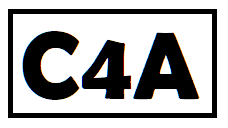Debt-to-Income Ratio Calculator: Understanding Your Financial Health
What is Debt-to-Income Ratio (DTI)?
The Debt-to-Income Ratio (DTI) is a critical financial metric that quantifies the proportion of your gross monthly income that goes towards paying off your debts. It is calculated using the formula:
\[ \text{DTI} = \frac{\text{Total Monthly Debt Payments}}{\text{Gross Monthly Income}} \]
The DTI is typically expressed as a percentage, which makes it easier to interpret. For example, if your total monthly debt payments are $2,000 and your gross monthly income is $5,000, your DTI would be calculated as follows:
\[ \text{DTI} = \frac{2000}{5000} = 0.40 \text{ or } 40\% \]
This means that 40% of your income is dedicated to paying off your debts. Understanding your DTI is crucial because it provides insight into your financial stability and your ability to manage additional debt.
Complex Explanation of DTI
The DTI is a comprehensive measure that includes all recurring debt obligations, such as mortgage payments, car loans, student loans, and credit card minimum payments. It does not include non-debt obligations like rent, utilities, groceries, or insurance. The formula for DTI can be expanded to:
\[ \text{DTI} = \frac{\sum (\text{Monthly Payment}_i)}{\text{Gross Monthly Income}} \]
Where \( \sum (\text{Monthly Payment}_i) \) represents the sum of all monthly debt payments. For instance, if you have a mortgage payment of $1,200, a car loan payment of $300, and a credit card minimum payment of $500, your total monthly debt payments would be $2,000. If your gross monthly income is $5,000, your DTI would be:
\[ \text{DTI} = \frac{1200 + 300 + 500}{5000} = \frac{2000}{5000} = 0.40 \text{ or } 40\% \]
This detailed breakdown helps you understand exactly how much of your income is allocated to debt, providing a clearer picture of your financial health.
Interpreting Your DTI
A lower DTI indicates better financial health and a higher likelihood of loan approval. Here’s a more detailed guideline:
- Below 36%: Excellent. This is generally considered a healthy ratio for loan approval. It suggests that you have a strong financial foundation and can comfortably manage your current debts while taking on additional financial obligations.
- 36%-43%: Acceptable. You may still qualify for loans, but with potentially less favorable terms. Lenders might require higher interest rates or larger down payments due to the higher risk associated with your DTI.
- Above 43%: High. This may make it difficult to secure loans on favorable terms. Lenders view a high DTI as a sign of financial strain and may deny your loan application or offer very unfavorable terms.
Why is DTI Important?

Your Debt-to-Income Ratio is crucial when applying for loans, including mortgages, car loans, and personal loans. Lenders use this ratio to determine your creditworthiness and your ability to handle additional debt. A low DTI demonstrates that you have a strong financial position and are less likely to default on loans. Conversely, a high DTI can lead to loan denials or unfavorable loan terms, impacting your financial flexibility.
For example, if you are applying for a mortgage and your DTI is 45%, a lender might view you as a high-risk borrower and either deny your application or offer a mortgage with a higher interest rate. This could significantly increase your monthly payments and make homeownership more challenging.
Improving Your DTI
To improve your DTI, consider the following strategies:
- Reduce Debt: Prioritize paying off high-interest debts first to lower your total monthly debt payments. This can be achieved through methods like the debt snowball (paying off debts from smallest to largest balance) or the debt avalanche (paying off debts from highest to lowest interest rate).
- Increase Income: Look for opportunities to increase your earnings, such as taking on a side job, asking for a raise, or pursuing additional education or training to enhance your career prospects.
- Budget: Create and stick to a budget to manage your expenses and avoid unnecessary debt. Identify areas where you can cut back, such as dining out, subscriptions, or luxury items, and allocate those savings towards debt repayment.
- Negotiate Lower Interest Rates: Contact your creditors to negotiate lower interest rates on your existing debts. This can reduce your monthly payments and help lower your DTI.
- Consolidate Debts: Consider consolidating multiple debts into a single loan with a lower interest rate. This can simplify your payments and reduce your overall debt burden.
Conclusion
Understanding and managing your Debt-to-Income Ratio is essential for maintaining good financial health and securing loans on favorable terms. Use the Debt-to-Income Ratio Calculator above to assess your current financial situation and take steps to improve your ratio. By reducing your debt, increasing your income, and sticking to a budget, you can achieve a healthier financial future.
For more information, visit us at Facebook or contact us at office@calculator4all.com.
